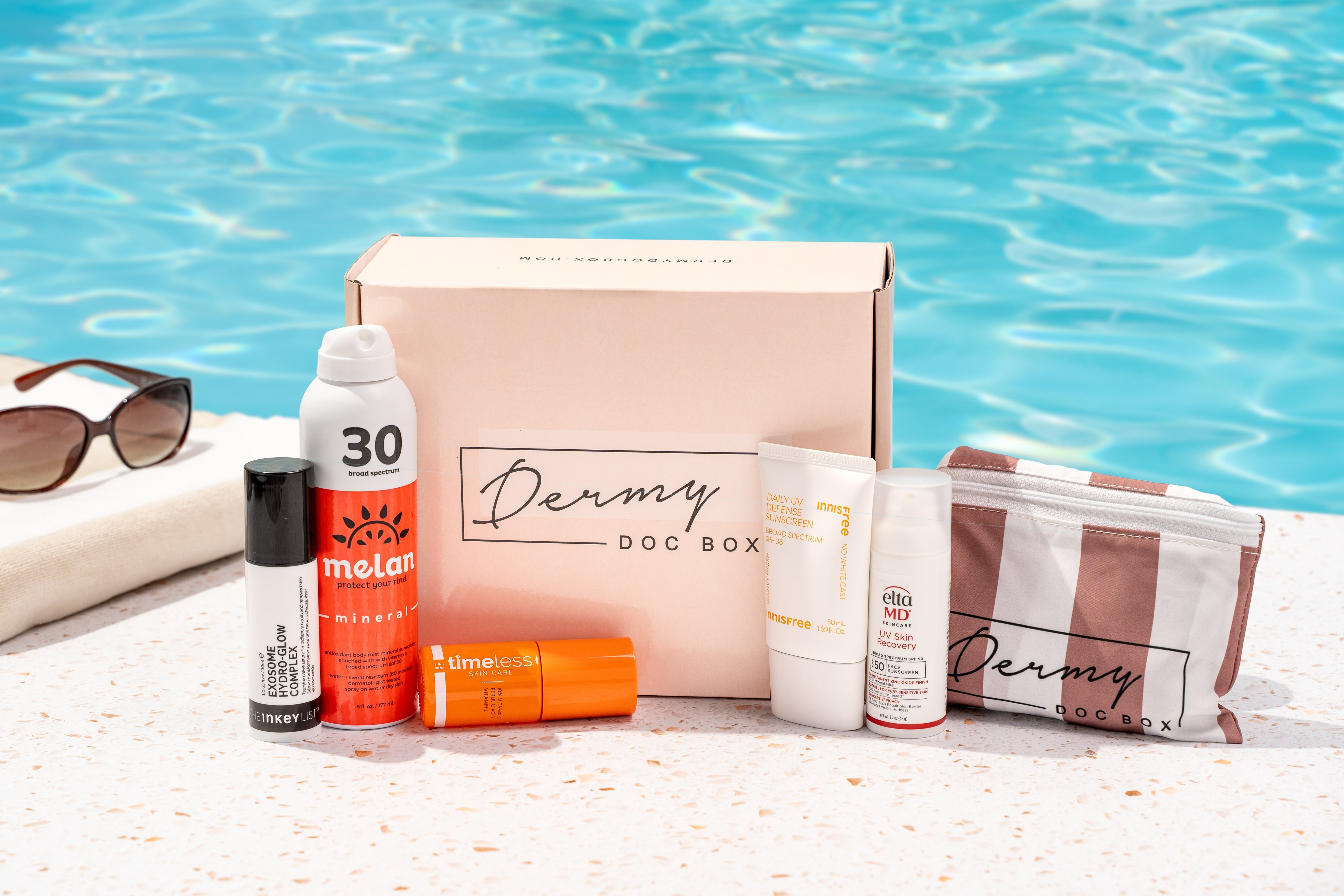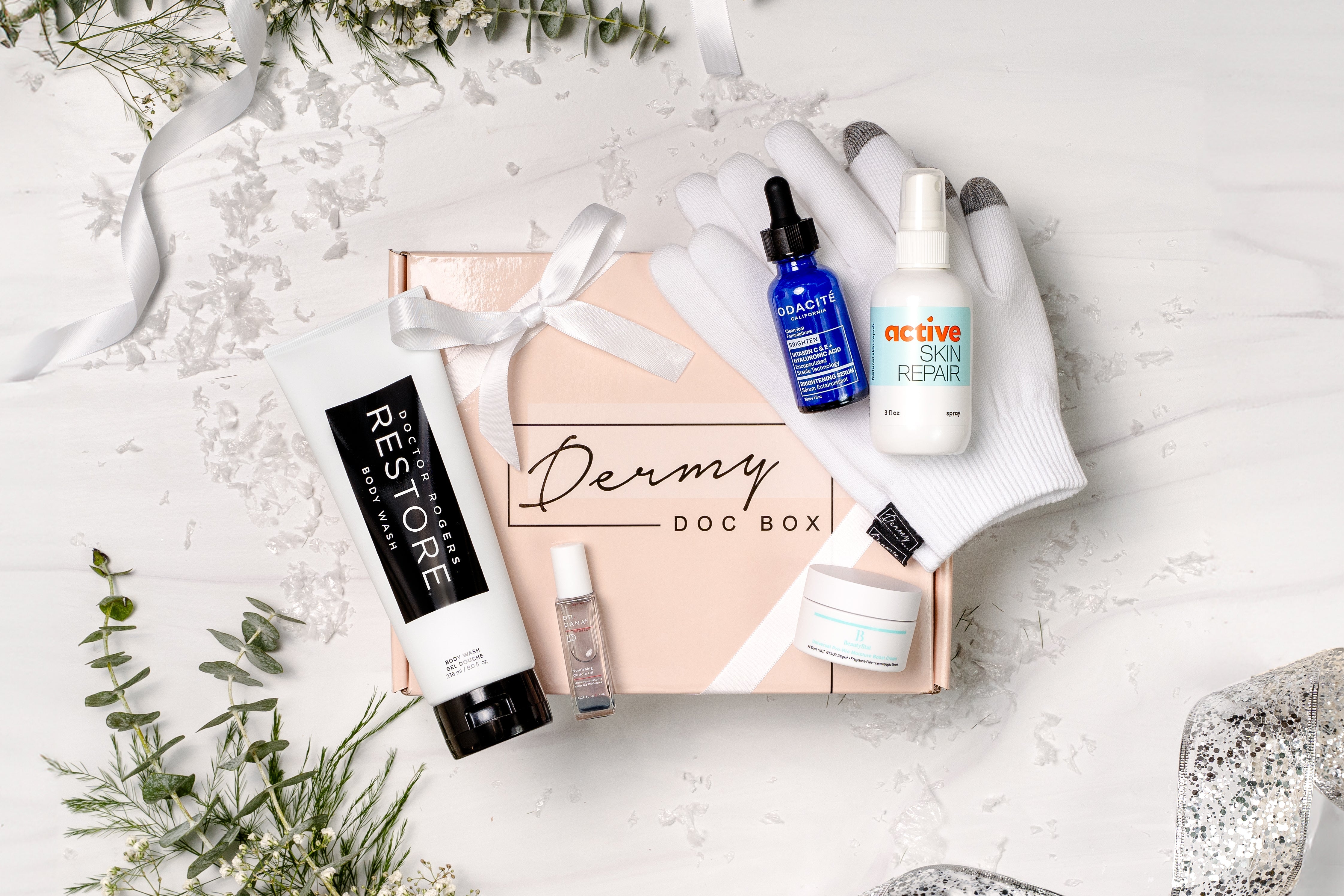After a long and cold winter, I don’t blame anyone for wanting to be outdoors all the time and soak up the beautiful weather. My family loves to spend the weekends at the lake and it’s something I look forward to every summer season. However, it’s essential that you take sun protection seriously and I’m here to give you a few tips on how to do so!
As a dermatologist, I see patients with skin cancer on a weekly basis in the office. No matter what genetics or skin disposition you may have, UV exposure is a skin cancer risk factor for all skin types. In fact, skin cancer is the most common cancer in the U.S. with 1 in 5 Americans developing it by age 70.
From the Skin Cancer Foundation
More than 9,500 people in the U.S. are diagnosed with skin cancer every day.
Sun Protection 101
The general rule of thumb is to apply sunscreen with an SPF of 30 or more to exposed areas and reapply every two hours when outdoors. You should also reapply after swimming or sweating.
Realistically, start by just wearing a daily facial sunscreen! Make it a part of your morning skincare routine (this should be the last step before makeup). Apply it to your face, ears and neck. As that becomes a daily morning habit, start to do the same on exposed areas like arms and legs when you’re spending time outdoors. Over time, this becomes second nature! To make this process easier in our household, we keep a basket of sunscreens near our door so that we don’t forget!
Seeking shade while outdoors is another simple and easy tip. You can find shade under a wide brim hat, beach umbrella or tree. The peak time for UV exposure is between the hours of 10am - 2pm, so seeking shade is especially important during these times.
Another key aspect of sun protection is wearing sun-protective clothing. Items such as a wide brim hat, sunglasses with UV protection, and even long–sleeved shirts and pants will go a long way in protecting your skin.
Sun Protective Clothing
- A basic white t-shirt has an SPF of 7
- A long-sleeved denim shirt has an SPF of about 1,700 (but who wants to wear thick denim to the beach!)
When searching for summer apparel, you can look for clothing with a “UPF” label. UPF stands for Ultraviolet Protection Factor and a UPF of 50 blocks about 98% of UV rays. This type of fabric is specially designed to block UV rays, and the protection doesn’t wash out in the laundry! Most of this apparel is designed to be cool and breathable, making it ideal for summer weather.
In the next section, I’ll break down the different types of sunscreens and what you should be looking for when protecting your skin.
Types of Sunscreens
There are two major types of sunscreens:
- Chemical (oxbenzone, avobenzone, octinoxate, homosalate, octisalate, octocrylene)
- Mineral/Physical (zinc oxide and titanium dioxide)
There are some differences to know between the two, but both are meant to protect the skin from UV rays.
First of all, let’s make one thing clear: the terms “mineral” and “physical” are interchangeable. They mean the exact same thing: a sunscreen that contains zinc oxide and/or titanium dioxide. That’s it!
Formally speaking, we often explain that chemical sunscreens work by absorbing UV photons, converting and releasing them as heat, while mineral sunscreens form a shield on top of the skin to reflect those UV rays. The reality is, both types of sunscreens absorb UV rays to a certain degree.
There are only two types of mineral (physical) sunscreens: zinc oxide and titanium dioxide. We tend to find that these ingredients are better suited for more sensitive skin and are therefore a great choice for those with rosacea, eczema and even babies. Mineral sunscreens also tend to be more photostable (less likely to need as much reapplication with light exposure compared to chemical sunscreens).
The downside is their formulation can be difficult and often result in a white cast or thick application, which lots of consumers hate. That being said, newer formulations combat this problem with the use of micronized zinc particles or the addition of iron oxides which add a tint to the sunscreen and therefore also protect the skin against visible light, which can impact hyperpigmentation.
Chemical sunscreens on the other hand are often cosmetically more elegant, however, some chemical sunscreens are more likely to cause irritation. There is also a lot of buzz online about chemical sunscreens being “toxic”. Unfortunately, the internet can do a really good job of fear mongering the general public. But, it’s important to look at the facts. Here is what we know:
- All sunscreens are subject to strict regulation by the FDA because they are considered a “drug”.
- The FDA has very strict rules on approved sunscreen filters and this is also why there haven’t been newer sunscreen filters introduced in the US market for years that are already widely available in Europe.
- In 2020, the FDA released a report saying that six chemical filters (avobenzone, octocrylene, oxybenzone, ecamsule, homosalate, and octisalate) were absorbed at higher concentrations than recommended by the FDA.
- The levels were higher than 0.5 nanogram per milliliter (ng/mL) which is the concentration at which the FDA considers ingredients safe by default. This doesn’t mean that levels above this are not safe, it just means that any level below this has such a negligible risk, that they don’t require additional data. So to clarify, finding these chemical filters in the blood at a higher concentration than threshold doesn’t mean they aren’t safe, it just means we need more data to be analyzed.
- This is the important point: the FDA still needs more data before they can determine if these types of filters are “GRASE”, which stands for generally recognized as safe and effective.
- What do we have good data on? We have overwhelming evidence that UV exposure is a major risk factor for skin cancer, and therefore, we continue to recommend sunscreen. “Given the recognized public health benefits of sunscreen use, the FDA strongly advises all Americans to continue to use sunscreens in conjunction with other sun protective measures (such as protective clothing) as this important rulemaking effort moves forward.”
Now that you have some more background, let’s break down some of my favorite sunscreens for 2022!
My Favorite Sunscreens

Elta MD UV Elements Broad-Spectrum - SPF 44
This tinted mineral sunscreen is one of my favorites for a reason! It’s formulated with hyaluronic acid to quench dry skin and avoids that dry sticky sunscreen feeling. It’s non-comedogenic, making it safe for all skin types including sensitive and acne prone skin.
An additional bonus of this sunscreen is that it contains Ascorbyl Palmitate (Vitamin C!), so it also works as an antioxidant to reduce free radicals that can speed up the signs of skin aging! For those with darker skin types who find many mineral sunscreens leave a white cast, you’ll love this sheer tint.
La Roche-Posay Toleriane Double Repair Face Moisturizer - SPF 30
Patients who see me in the office know that this is one of my go-to favorite drugstore sunscreens to sample out! This formulation has a lightweight, non greasy lotion texture, so it sits perfectly under makeup, but it’s also packed with moisturizing ingredients like glycerin and ceramides to deeply hydrate!
It combines your moisturizer and sunscreen into one step to save you on time. With thermal spring water to provide prebiotic action to restore a healthy skin microbiome and niacinamide for soothing irritated skin and improving pigmentation, this sunscreen is going to be a favorite of yours too.
Urban Skin Rx Sheerglow Even Tone Daily Defense Mineral Moisturizer - SPF 30
Unlike most mineral sunscreens, which can go on thick and leave a white or purple cast, this formula is sheer on diverse skin tones! It also contains sunflower seed oil to soften and soothe the skin, without clogging pores, making it ideal for oily or acne-prone skin.
Grapefruit extract is an antioxidant rich in Vitamin C that can help brighten the complexion and bisabolol is a soothing antioxidant included in this formulation. After applying, wait an additional 3 -5 minutes for absorption and sheer glow!
Note to My Readers
Wouldn’t it be nice if you didn’t have to guess what new skincare products are worth the hype or aimlessly wander down the drugstore aisle looking for them? That’s what I’m here for!
Each and every product in a Dermy Doc Box is selected because I have personally tried it, loved it and would recommend it to my own family and patients. It takes the guesswork out of finding quality skincare.
Happy Reading!
XOXO,







